|
China : Zhèjiāng Shěng
0.8 km (0.5 miles) SSE of Dayuan, Zhèjiāng, China
Approx. altitude: 36 m
(118 ft)
([?] maps: Google MapQuest OpenStreetMap ConfluenceNavigator)
Antipode: 30°S 60°W
Quality: good
Click on any of the images for the full-sized picture.
| 30°N 120°E (visit #3) |
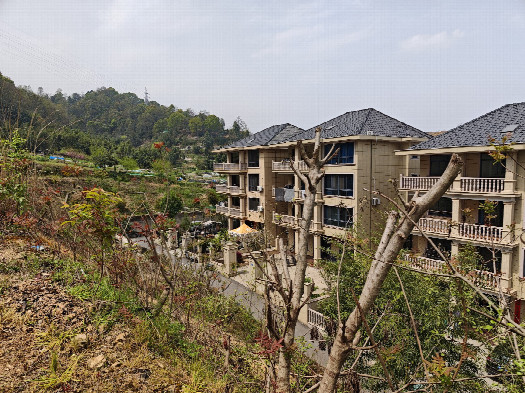 (visited by Nano Zheng) 04-Apr-2025 -- English 这一天是清明节,我选择在这一天开始我的第一次 Confluence Trip。 早上 09:41 分,我乘坐 G7357 次列车从杭州东火车站出发(插曲:由于从家出发得太晚,在检票口关闭前 5 秒才赶到),并于 10:03 分到达富阳火车站。这个火车站距离最终的目的地只有 1km 的距离。出站后,我又走了差不多 1.6km 的路,来到了一个分岔路口。出乎我意料的是,这个路口居然有一块「蝴蝶阁民居(经纬准交点)」的路牌,绷不住了,现在连导航都不用了。 穿过隧道后右转,10:43,我站在了 E30N120 的交汇点上。 这个交点位于一条沥青小路上。我打开 GPS Status 应用,在路上不断小步挪动着位置,试图让屏幕显示的坐标变成一串 0。成功后,我把手机放在地上,并用另外一个手机拍摄了地上的手机屏幕。距离交汇点只有 0m!大功告成! 由于交汇点周围有一侧 3m 高的西南-东北走向的墙挡住了视线,所以我在交汇点处拍摄了全景照片(左边朝向西南,右边朝向东北),并在距离交汇点 20m 处的高地上(坐标 N29.99983, E119.99996)朝着东、南、西、北四个基本方位拍摄了照片。 交汇点的西北方向有 14 户人家,门口的门牌上写着「亭山村蝴蝶阁」,每栋楼都四层楼高,且都有院子有车库(羡慕死了我也想要)周围与 2005 年照片里的农舍相比,恍如隔世。 完成最最最最主要的任务后,我开始四处探索。由于清明节假期的缘故,许多人从附近的登山处上山祭祖,所以还挺热闹的,不过平时可能没那么多人。附近还有一个路线图,展示附近的登山路线。 在经纬度交汇点附近有一个阳平山碑,立于辛巳(2001)年,坐标(N29.99983, E119.99996),距离交汇点大约 20m。碑记上貌似记载着孙钟的墓就在此处(孙钟,东汉末年吴郡富春『今浙江杭州富阳』人,孙武的后人,孙吴武烈皇帝孙坚的长辈)虽然我更倾向这是后人附会。 此前造访此地的记录者,曾由一位「knowledgeable local」指引下,参观过一块位于经纬度交汇点附近的石桩。根据之前拍摄的照片,我向山脚下一位临时担任森林防火员的老人询问,他很快确定了照片中的人物,并告诉我这个人就住在附近的 14 户人家中。凭借这一线索,我很快找到了那位向导。 时隔二十年,老人的外貌已有了很大变化。有意思的是,他和家人仍清楚记得当年曾有三位外国访客到访寻找汇合点的事。老人还向我指明了石桩的位置,我顺着他所指的方向,在坐标(N30.00006, E120.00077)处找到了这块标石。准确来说,这是一块三角点标石,属于永久性测量标志,由浙江省测绘局设立,用于标定测绘控制点的位置与高程。从周围环境看,该标石附近并无显著地理特征,推测其最初便是为标记(N30, E120)这一经纬度交汇点而设。不过由于早期定位误差,实际位置与理论交汇点存在 75 米左右的偏差。 中午 12 点,提交完 Ingress Portal 申请并藏好了一个新的 Geocaching Cache 后,我离开现场到马路边打车,前往鹳山公园附近享受我剩余的旅程。午饭选在了一家开了 17 年的老店「阿汤面馆」,点了份腰花面并加了份大肠(内脏爱好者狂喜),内脏洗得很干净,味道很赞! 饭后去鹳山公园欣赏春景,在富春江远眺。江边有不少垂钓者在钓鱼,甚至有个老爷爷同时操控十几根鱼竿,还用电动玩具船把鱼钩运到江面中心,不愧是钓鱼佬。在最南边的澄江亭附近,我还意外发现了一个水准点标石。这个标石上居然有个二维码可以扫,扫出来是这个标石的说明。 傍晚打车到「桂花西路」地铁站,乘坐地铁六号线前往浙江省博物馆(之江馆区)参观,将这里作为当日旅程的终点站,结束一天的旅程 w 04-Apr-2025 -- Today is Qingming Festival, and I chose this day to embark on my first confluence trip. At 09:41 in the morning, I boarded the G7357 train from Hangzhou East Railway Station (a small drama: I left home too late and arrived at the ticket gate just 5 seconds before it closed) and arrived at Fuyang Railway Station at 10:03. This station is only 1 km away from my final destination. After exiting the station, I walked another 1.6 km to a fork in the road. To my surprise, there was a signpost reading "Hudiege Residential Area (Latitude-Longitude Confluence Point)"—couldn't help but laugh, now I don't even need navigation. After passing through a tunnel and turning right, at 10:43, I stood at the intersection of E30N120. This confluence point is located on a small asphalt road. I opened the GPS Status app and took tiny steps to adjust my position, trying to get the coordinates on the screen to show all zeros. Once successful, I placed my phone on the ground and took a photo of the screen with another phone. The distance to the confluence point was 0 m—mission accomplished! Since a 3-meter-high wall running southwest to northeast blocked part of the view around the confluence point, I took a panoramic photo at the spot (left is southwest and right is northeast). I also took photos from a higher ground 20 meters away (coordinates N29.99983, E119.99996), facing the four cardinal directions (West, North, East, and South). To the northwest of the confluence point, there are 14 households with doorplates reading "Tingshan Village, Hudiege." Each house is four stories tall and has a yard and a garage (so envious, I want one too). Compared to the farmhouses in photos from 2005, the surroundings feel like a different world. After completing the most important task, I began exploring the area. Due to the Qingming Festival holiday, many people were hiking up the nearby trails to pay respects to their ancestors, making it quite lively—though it's probably quieter on regular days. There was also a trail map nearby showing the hiking routes. Close to the confluence point, there's a stele for "Yangping Mountain" erected in the 2001 year, at coordinates (N29.99983, E119.99996), about 20 meters from the confluence point. The inscription seems to mention that the tomb of Sun Zhong is located here (Sun Zhong, a native of Fuchun in Wu Commandery during the late Eastern Han Dynasty—present-day Fuyang, Hangzhou, Zhejiang—was a descendant of Sun Wu and an elder of Sun Jian, the Martial Emperor of Eastern Wu). Though I'm more inclined to think this is a later embellishment. Previous visitors to this site had been guided by a "knowledgeable local" to a stone marker near the confluence point. Based on old photos, I asked an elderly man temporarily serving as a forest fire warden at the foot of the mountain. He quickly recognized the person in the photo and told me he lived among the 14 households nearby. With this lead, I soon found the guide. Twenty years later, the old man's appearance had changed significantly. Interestingly, he and his family still vividly remembered the three foreign visitors who came searching for the confluence point back then. He pointed me to the stone marker, and following his directions, I found it at coordinates (N30.00006, E120.00077). To be precise, it was a triangulation marker—a permanent surveying monument set up by the Zhejiang Bureau of Surveying and Mapping to mark control points for elevation and position. The surroundings showed no notable geographical features, suggesting it was originally placed to mark the (N30, E120) confluence point. However, due to early positioning inaccuracies, the actual location deviates by about 75 meters from the theoretical point. At noon, after submitting an Ingress Portal application and hiding a new Geocaching Cache, I left the site and took a DiDi to the area near Guanshan Park to enjoy the rest of my trip. For lunch, I chose a 17-year-old eatery called "A Tang Noodle House," ordering noodles with pork kidney and extra intestines (a delight for offal lovers). The offal was cleaned thoroughly and tasted amazing! After lunch, I visited Guanshan Park to admire the spring scenery and gaze at the Fuchun River. Many anglers were fishing along the riverbank—one elderly man even managed over a dozen fishing rods at once, using a remote-controlled toy boat to ferry his hooks to the center of the river. Truly a fishing master. Near the southernmost Chengjiang Pavilion, I unexpectedly discovered a stone marker, and it had a QR code that provided details about the marker. In the evening, I took a DiDi to "Guihua West Road" subway station and rode Line 6 to the Zhejiang Provincial Museum (Zhijiang Branch), making it the final stop of my day's journey. And so, the adventure concluded. w CP Visit Details:
|
| All pictures |
| #1: View West #2: View North #3: View East #4: View South #5: Panoramic view of the confluence #6: New Households #7: GPS #8: Signpost at the intersection #9: Yangping Mountain Stele #10: Knowledgeable local (20 years later) #11: Stone Marker #12: the Fuchun River ALL: All pictures on one page |

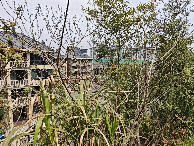
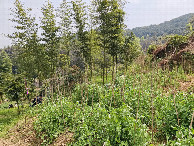
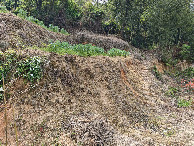


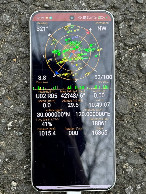
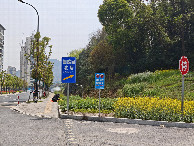
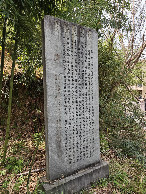
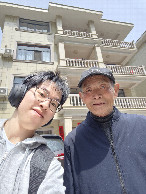

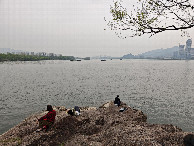
![Visit #2: [05-Feb-05] Visit #2: [05-Feb-05]](/cn/all/n30e120v2/preview.jpg)
![Visit #1: [15-Jun-03] Visit #1: [15-Jun-03]](/cn/all/n30e120/preview.jpg)